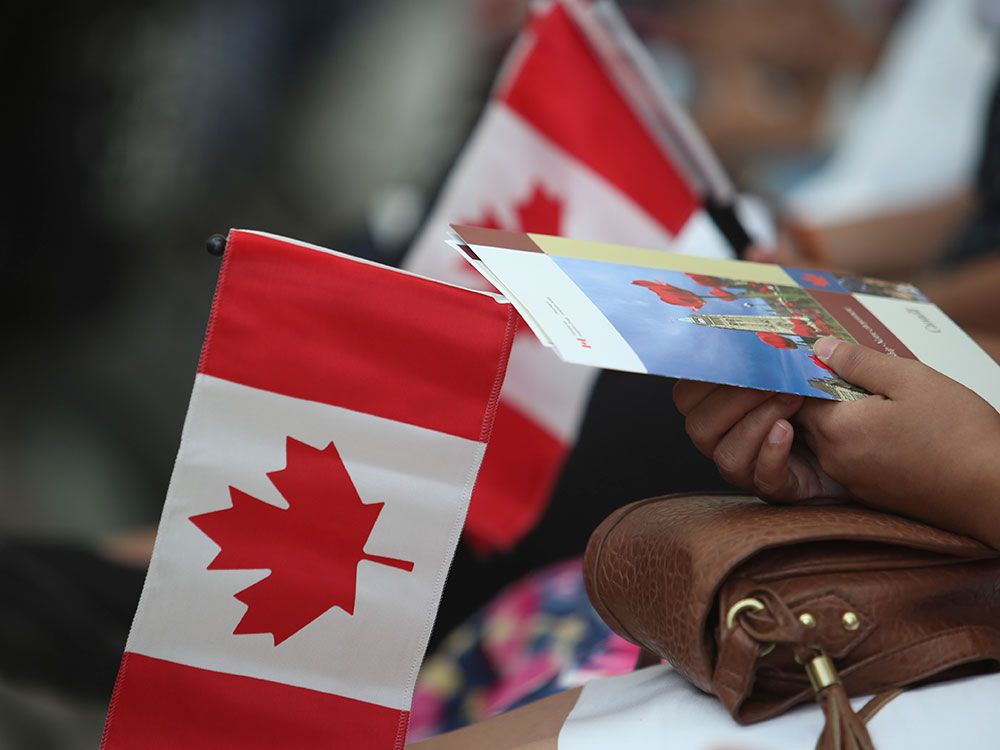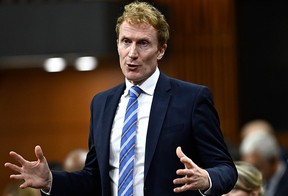What to expect when Canada unveils its new immigration targets today

Ottawa to provide estimates of number and kind of immigrants it hopes to admit over next three years

Article content
The federal government will announce its new Immigration Levels Plan on Nov. 1, providing estimates of the number and kind of immigrants Canada hopes to admit in the next three years.
Last year, the goal was to accept 465,000 permanent residents by 2023, 485,000 in 2024 and 500,000 in 2025.
Article content
The goal-setting is an annual affair and doesn’t generally attract much debate, but this year is different because Canada is battling rising prices and a housing crisis. As a result, some economists and national studies have urged the federal government to provide more clarity on how it plans to accommodate hundreds of thousands more newcomers.
Advertisement 2
Story continues below
Article content
Some economists have linked the rise in rents and stress on services to the influx of newcomers. Apart from more than 400,000 permanent residents, Canada also admitted about 700,000 temporary residents, foreigners who either have a work or study permit, or have claimed refugee status, in the past year.
Ahead of the announcement, Canada’s new Immigration Minister Marc Miller on Oct. 31 talked about the approach he intends to take with the plan.
Will Canada lower its immigration targets this year?
That’s unlikely. Although Miller didn’t discuss exact numbers on Oct. 31, he did say in an interview in August that he doesn’t “see a world in which” the numbers could be decreased.
Miller said the previous increases in the immigration targets resulted in “significant gains” in gross domestic product and helped fill labour gaps.
Aside from the levels plan on Nov. 1, he said he intends to work on improving the immigration system. As part of that promise, he released a report on Oct. 31 that was based on consultations with business groups, provinces and immigrants. One of the goals is to better utilize the talents of newcomers to boost the economy.
Article content
Advertisement 3
Story continues below
Article content
“We still have labour gaps. I think that is something we can do a better job in, matching supply and demand. We haven’t done a super job,” Miller said.
Is the minister under pressure?

This is Miller’s first levels plan announcement since he replaced Sean Fraser as immigration minister earlier this year. With the housing crisis and rising prices, it’s safe to say he is facing an uncertain environment.
Earlier this week, a national survey by research groups Environics Institute and Century Initiative said there has been a “dramatic reversal” in public support for the number of people Canada wants to bring in.
Stéfane Marion, chief economist at the National Bank of Canada, in an Aug. 2 note said Ottawa’s decision to invite so many newcomers during a period when the Bank of Canada was implementing the “most aggressive monetary tightening cycle in a generation” has created a “record imbalance” between housing supply and demand.
A report from Toronto-Dominion Bank published in July said the housing shortage could widen by an additional 500,000 units within two years if immigration continues at its current rate.
Advertisement 4
Story continues below
Article content
Does he think he is having it tougher than previous ministers? “Hard to say,” Miller said. “Because it is my first time experiencing this. I will have to compare notes afterwards.”
He said he doesn’t think the surveys suggest anti-immigrant sentiment is on the rise, but that people are “asking their elected officials to plan better in a number of areas.”
What are some of the messages Miller hopes to convey?
A key demand from economists has been to provide more information on how the government plans to meet its permanent residency targets without just stating the numbers.
For example, Rebekah Young, an economist at the Bank of Nova Scotia, on Oct. 23 said the government could explore an all-in target that includes both permanent and temporary residents. That way there could be more information on how many temporary residents, who are already in the country, are becoming permanent residents.
The lack of clarity issue is a problem, Miller said.
“We can certainly do a better job at that,” he said.
Since the levels plan mainly deals with permanent residents, it doesn’t highlight the pressures from temporary residents on housing and health services, he said.
Advertisement 5
Story continues below
Article content
“Thirty-five per cent of the people (future permanent residents) are already here, so it isn’t 500,000 homes that need to be built as a result of the 500,000 target,” he said. “It is much more complex and much less linear than people automatically assume.”
As such, Miller wants to use this announcement to clearly break down the categories and clarify the “government’s messaging.”
Will Canada invite more economic migrants?
The Business Council of Canada, an association of about 150 companies, including Microsoft Canada Inc. and Google Canada, in a letter sent to the minister last week urged the government to increase the percentage of people under the economic category to 65 per cent from 60 per cent. The letter pointed out that Australia has reserved more than 70 per cent of its immigrants for the economic stream.
Related Stories
Miller said he is considering the council’s request, but added it is going to be a “difficult juggling act,” since increasing one category would mean decreasing the others.
“We have some flexibility within those sort of three big pillars and there is opportunity to look at them in more detail as the year goes on,” he said.
• Email: [email protected]
Bookmark our website and support our journalism: Don’t miss the business news you need to know — add financialpost.com to your bookmarks and sign up for our newsletters here.
Article content








Comments
Postmedia is committed to maintaining a lively but civil forum for discussion and encourage all readers to share their views on our articles. Comments may take up to an hour for moderation before appearing on the site. We ask you to keep your comments relevant and respectful. We have enabled email notifications—you will now receive an email if you receive a reply to your comment, there is an update to a comment thread you follow or if a user you follow comments. Visit our Community Guidelines for more information and details on how to adjust your email settings.